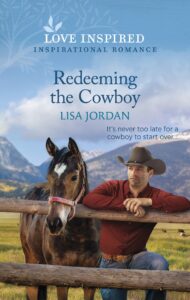by Lisa Jordan, @lisajordan
When you pick up a new book, what keeps you turning the pages? For many, it’s the dialogue, which is the best way to learn about the characters and what’s happening in the story. That’s why bestselling author Rachel Hauck says, “Tell the story between the quotes.”
In addition to the words spoken in the story, there are a few essential elements of dialogue as well: attribution, action beats and body language.
Today, I’m going to talk about attribution and action beats. Then my next post will focus on body language.
Differences between attribution and action beats.
Attributions, or dialogue tags, signal who is speaking by using verbs like said, such as “I’m never going to get this book written,” Lisa said.
Action beats take those attributions a step further. They are physical movements included before or directly after dialogue to show who is speaking without using verbs like said. As the name implies, they show action. When used correctly, they can add dimension to your scenes.
“I’m never going to get this book written.” Lisa rested her elbow on the desk and cupped her chin.
Action beats prevent talking heads, which are chunks of dialogue with no interaction between others in the scene or their surroundings. Talking heads make it more difficult for the reader to understand who is communicating.
Action beats also contain active verbs that show the character moving through the scene and their surroundings or doing something while engaged in conversation, creating a visual for the reader. Additionally, they can highlight the character’s mood or emotion and show what the character ISN’T saying through subtexting. They help with pacing and rhythm in a passage of dialogue.

When you use action beats to help your character engage in their surroundings, you can show the setting without static paragraphs. By that, I mean you can show where the character is and what they are doing instead of taking a paragraph or two to describe the setting.
By using action beats, you have more flexibility and more opportunities to share more about your character than using “said” all the time. My personal goal in every book is to have five or less “said” tags. I know other authors who use them, and that’s just fine. I simply prefer to eliminate them when possible.
Speaking of said—I’ve seen beginning writers use other verbs to replace said. Said is a common dialogue tag because the brain scans over it quite smoothly. However, using other verbs such as declared, admonished, etc. can pull readers out of the story.
An action beat isn’t necessary with a dialogue tag. For example, you don’t need to write “I’m never going to get this book written,” Lisa said, resting her elbow on the desk. Instead, write “I’m never going to get this book written.” Lisa rested her elbow on the desk.
When using action beats, be sure to stay within the viewpoint of the character in the scene. If you have two characters talking and the POV character has her back turned to the other, then she wouldn’t be able to see what the other character was doing unless she turned around.
Sentences with attribution are punctuated differently than sentences with action beats. With an attribution, a comma is included inside the closing quote and a period is used after the attribution. With an action beat, a period ends the sentence inside the closing quote marks.
Attribution: “I’m never going to get this book written,” Lisa said.
Action beat: “I’m never going to get this book written.” Lisa rested her elbow on the desk.
Move beyond the cliched beats of he looked, he sighed, he nodded, he smiled, he frowned. Whether you use attribution or action beats, allow for some white space—don’t use attribution or action beats for every line of dialogue. Otherwise, it becomes too wearisome for the reader. And the last thing we want is to give the reader an excuse to walk away from our books.
How does a cowboy know when to hang on
…and when to let go?
Five years ago, bull rider Bear Stone lost everything. His best friend. His fiancée. His career. And Piper Healy, his best friend’s wife, never forgave him for the rodeo accident that killed her husband. Now they’re working together to save his family’s ranch. But can this cowboy choose between his last chance at the rodeo…and the woman he’s falling for?

Heart, home, and faith have always been important to Lisa Jordan, so writing stories with those elements come naturally. Represented by Cynthia Ruchti of Books & Such Literary Management, Lisa is an award-winning author for Love Inspired, writing contemporary Christian romances that promise hope and happily ever after. Her latest book, Rescuing Her Ranch, released in January 2023. She is the content manager for Novel Academy, powered by My Book Therapy. Happily married to her own real-life hero for over thirty years, Lisa and her husband have two grown sons. When she isn’t writing, Lisa enjoys quality family time and being creative with words, photos, fibers, and papers. Learn more about her at lisajordanbooks.com.



Comments 1
I was taught that a comma was only used to finish a quote if there was a continuation of speech after the attribution.